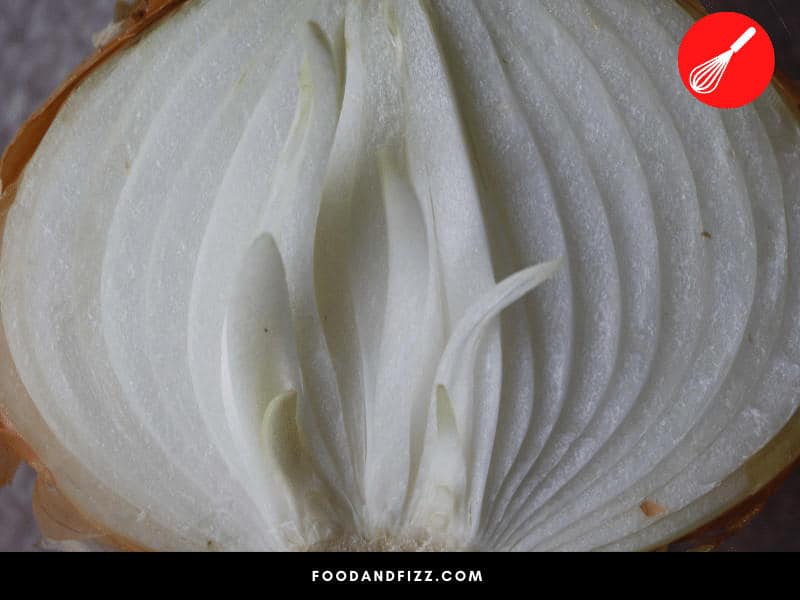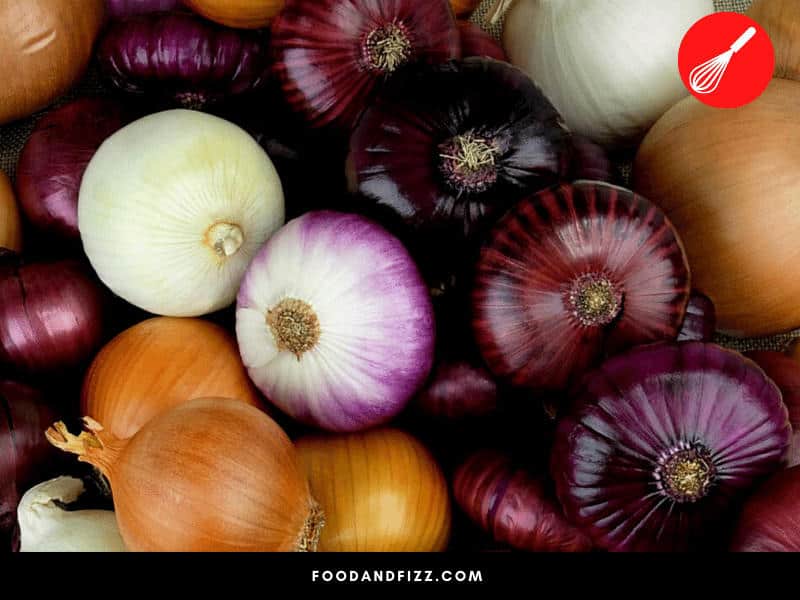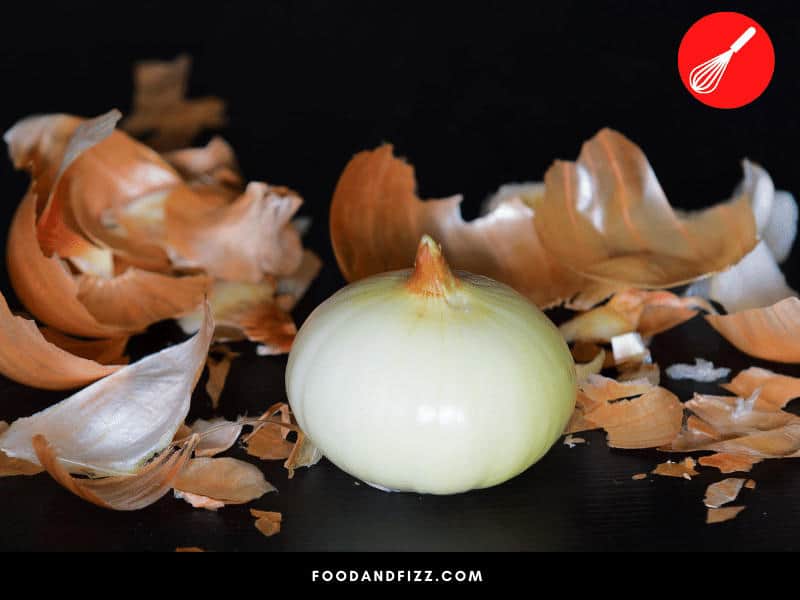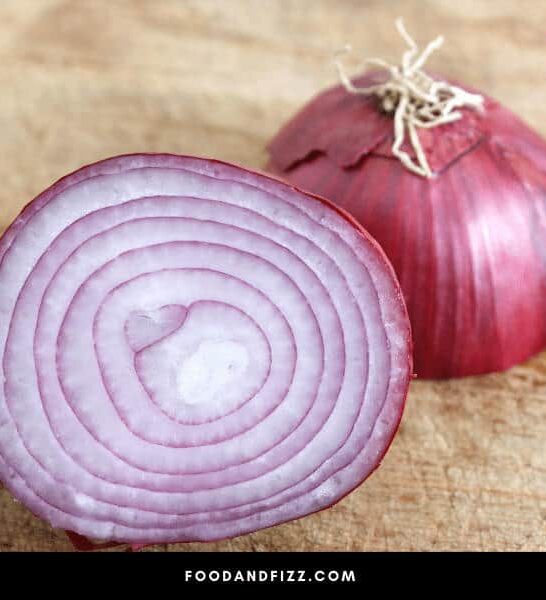Cutting and taking apart an onion is like unwrapping a present with thick wrapping. Of course, there is no surprise in the middle.
Did you know that the reason an onion has layers is linked to the way it grows and the leaves that stick up out of the ground? Let’s unpack this, the same way you break apart the layers of an onion bulb.
Why Do Onions Have Layers?
Onions have layers because they literally grow from the centre outwards and from the base up. As each growth point develops, a layer of the bulb is formed and the same layer develops upwards to be a leaf. An onion bulb will have one layer per leaf. The layers of the bulb are called ‘scale leaves’, because of the close relationship with the aerial leaves. Each layer is separated from the other by a thin membrane. The outer layer of the onion bulb is the epidermis, which is the outer skin and has two layers.

Onion Growth Process
The bulb of an onion grows from the centre and each subsequent layer wraps around the one before it. When an onion is picked and left to stand, it can develop mold, which attacks it from the outside. Thus, if an onion decays, it does so from the outside in.
Onion Layers
If you cut an onion in half, you will see the characteristic circular lines that indicate the different layers. We know these well and mostly take them apart to cook an onion. How else are you going to make onion rings, after all?
What you may not know is that the layers are essentially extensions of the leaves of the plant. The onion grows below ground from the centre. As each layer develops, the green part of the leaf sprouts above the ground and the layer underground gets bigger.
The process of growth means that the base of each leaf is modified to become the layers of the bulb. The layers are called ‘scale leaves’, which grow from the inside out. As the layers grow, the bulb increases in size and more leaves extend above the ground.

Number of Onion Layers
Onions have long thin leaves that stick up above the ground. The number of leaves one plant has will match the number of layers that form.
This means that the number of leaves relates to the size of the onion bulb. If an onion plant has a lot of leaves, there will be a lot of layers and the onion bulb will be big.
The number of layers an onion has will depend on how long it is left to grow, as well as the number of leaves it develops. It can also change depending on the variety of onion. However, on average, an onion will have between 8 and 13 layers.

Benefits of Onion Layers
It is well-known in healthy eating and even medical circles that onions contain elements that fight inflammation and reduce cholesterol levels. These antioxidants are a valuable part of the onion and part of the reason for its popularity as a vegetable.
Research has indicated that it is the outer layers of an onion that contain higher levels of antioxidants than the inner layers. In fact, the amount of antioxidants lessens towards the inside of the onion.
I don’t know if you’ve ever found an onion a little difficult to peel and pull off the outer layer of the bulb as well as the skin. It often happens that, when onions are cooked, the outside layers are usually peeled off and discarded. This exposes the tasty inner layers, which are then easier to separate and cut up.
This also means that often the most beneficial layer of an onion is the part that is not used. People are essentially depriving themselves of beneficial phytochemicals. The next time you peel an onion, make sure you don’t sacrifice any of the outer layers that are really good for you.

Onion Layers and Colors
If you cut the bulb of a red onion in half, you’ll see that the entire bulb is not one color. In fact, it looks as though some of the layers are tinged with red, while others are still white.
The color is actually spread through the layers of the onion quite randomly and also gently. However, the membrane between each layer is darker and gives the bulbs and that is where the characteristic red color comes from.
Composition of Onion Layers
Onions behave like any plant and produce food for themselves via the process of photosynthesis. The main product of this process is glucose, which is converted into starch. This is stored in the bulb of the onion.
The presence of the starch in the layers of the onion bulb makes it the food store for the plant. It also makes the bulb the part of the onion plant we eat.
The layers of the bulb contain the starch and each is separated from the next by a thin membrane, referred to as the skin. You will notice this when you cut an onion and take the layers apart to form an onion ring. The ‘skin’ is very thin and almost slimy.
The outer layer of the onion bulb is also called the skin, but is different from the internal membranes. This skin is known as the epidermis, which is the biological name for the outer covering of fruits and vegetables.
The epidermis consists of two layers and is thicker than the internal skin between layers. This is to protect the whole bulb. The epidermis is also quite brittle.

Conclusion to Why Do Onions Have Layers?
If you’ve ever eaten an onion, you’ll expect to find different layers. Sometimes they are quite thick and sometimes they are thinner. Onions develop the layers as they grow, because each leaf that grows also develops a layer on the bulb.
Frequently Asked Questions to Why Do Onions Have Layers?
How Can You Tell the Size of Your Onion Bulb?
An onion bulb is made up of layers that correspond with the number of leaves above ground. If your onion plant has only a few leaves, the bulb will only have a few layers and be quite small. When your plant develops quite a lot of leaves, you’ll know that there are just as many layers in a larger bulb.
Are All the Onion Layers Equally Good for You?
All onions contain antioxidants and elements that help with inflammation and heart disease. There are more of these in the outer than in the inner layers. The amount of antioxidants decreases as you get to the center of the onion.

